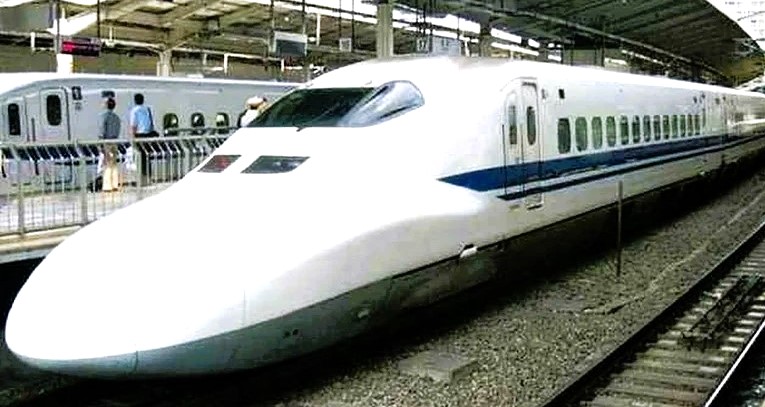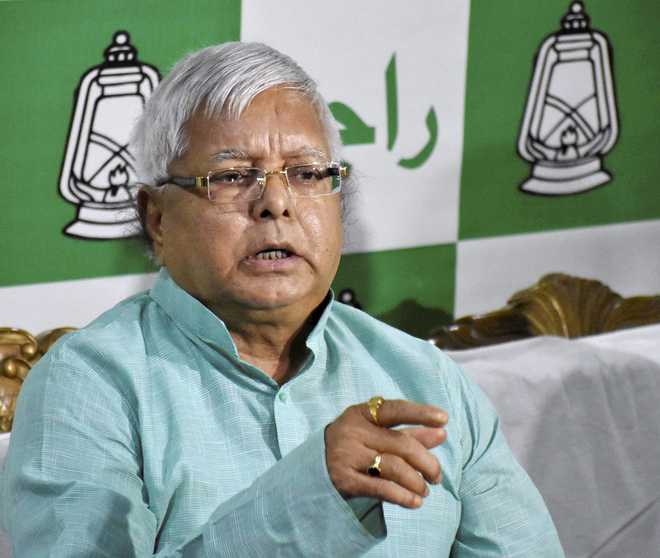Tridib Raman
India’s attempt to bring global attention to the alleged threat from ‘Operation Sindoor’ has repeatedly entangled itself in new complications. When a delegation of Indian MPs, led by Congress MP Shashi Tharoor, visited the United States, a young BJP MP who was part of the group ended up in the spotlight—albeit for the wrong reasons—due to his excessive political ambition. What irked this MP the most was that fellow delegate Milind Deora had pre-scheduled a meeting with Donald Trump Jr., which took place in a cordial atmosphere. Wanting a similar opportunity, the BJP MP tried to arrange his own meeting with Trump Jr., but failed. Frustrated, he boldly declared to his colleagues, “Now I will meet Donald Trump himself.” He was assisted in this effort by an old friend residing in the U.S., whose conduct is often considered mysterious. This friend took the MP to Trump’s private residence in Florida—Mar-a-Lago, which has been Trump’s personal estate since 1985. Spread over 62,500 square feet with 126 rooms, Trump converted it into a private club in 1994. Anyone can become a member by paying a hefty fee. The Trump family occasionally holds exclusive meetings with notable individuals there.
In fact, former Japanese PM Shinzo Abe and Chinese President Xi Jinping have both met Trump at this very location. Now back to the young BJP MP—he was introduced to Trump as someone “very close to the country’s head.” However, in typical Trump fashion, his behavior toward the MP was far from respectful, with offhand remarks that were reportedly quite hurtful. The MP left Mar-a-Lago deeply embarrassed, in a scene reminiscent of the saying: “Bade be-aabroo hokar tere kooche se hum nikle”. The MP never spoke about the incident, but news has wings—and this one flew across the ocean and landed on Raisina Hill. According to sources, the party leadership summoned him and gave him a serious dressing-down in the presence of three senior leaders. At one point, there was even talk of expelling him from the party. However, after his earnest apologies and repeated pleas, he appears to have been granted a reprieve, for now.
Bihar on Cloud Nine
Tridib Raman

Just like small children are coaxed into taking exams—with sweet talk and lollipops—Bihar too is being treated in much the same way. While Bihar may be the one sitting the “election exam,” it’s the political parties that will ultimately pass or fail. With state elections approaching, the ruling party is showering Bihar with gifts. On June 30, the Airports Authority of India and the Bihar government signed an MoU to expand the Udaan Scheme, agreeing to build six new airports in Bihar for the state’s holistic development.
These airports are planned for Birpur, Saharsa, Madhubani, Munger, Valmiki Nagar, and Muzaffarpur. In addition, there’s accelerated progress in reviving the Purnea Airport. The ruling party is eager to ensure that flights begin at least by September, ahead of elections. However, several obstacles had previously stalled the project. Delays in land allocation from the state government meant that approach roads couldn’t be constructed. That issue has now been resolved. Yet, the required 15 acres for the airport’s boundary wall is still pending allocation. To expedite operations at Purnea Airport, it’s been decided to use the peripheral roads and apron area from the old airport. Expansion or new construction will follow later. Interestingly, Purnia’s runway is longer than those at Patna or Gaya international airports—measuring 2,800 meters—allowing it to handle large aircraft like the A320 and A321. The speed of construction itself is a case study. Just two months ago, on May 29, Prime Minister Modi inaugurated a new terminal at Patna Airport, built at a cost of ₹1,200 crore. He also greenlit construction at Bihta Airport, as Patna’s short runway cannot accommodate wide-body aircraft. Bihta aims to fill this gap. Meanwhile, a ₹600 crore new terminal is under construction at Darbhanga Airport, intended as a state-of-the-art facility. Despite all this, local BJP leaders in Bihar frequently complain: “Airports alone won’t solve our problems. We need new industries—especially agro-based initiatives—to generate local employment and prevent migration.”
What Happened to the Bullet Train?

Although assembly elections in Gujarat are scheduled for December 2027, the political temperature there has already started to rise. In September 2017, the Prime Minister laid the foundation stone for India’s first bullet train project, stating that “this train will run at a speed of 320 kilometers per hour between Ahmedabad and Mumbai, starting from August 2022.” The cost of this single Shinkansen, or Japanese bullet train, project was estimated at ₹1.08 lakh crore. Last September, when Railway Minister Ashwini Vaishnaw visited Japan, he returned and announced, “We cannot deliver the bullet train before 2032.” Following this, the central government decided that “instead of the bullet train, Vande Bharat trains will now run on this track at a speed of 280 kilometers per hour.” An order for two Vande Bharat trains capable of running at 280 kilometers per hour was also placed with BEML.
Now, the question arises: the 508-kilometer track being laid for the bullet train was of standard gauge, typically 4 feet 8.5 inches wide. In contrast, Vande Bharat operates on broad gauge, with a track width of 5 feet 6 inches. For the signaling system, the Railway Ministry awarded a tender to Siemens, which will install European-standard ERS signaling, whereas Japan’s bullet train operates on an Automatic Train Control system. Notably, in response to an RTI, the Railway Ministry stated that the speed of Vande Bharat (from 2021 to 2024) had decreased from 84 kilometers per hour to 76 kilometers per hour. Moreover, the next order for bullet trains with BEML is for a speed of 220 kilometers per hour, and the third phase of the bullet train is expected to reach 280 kilometers per hour. This raises a pressing question: “What will be the fate of the ₹1.08 lakh crore invested in the bullet train project?”
Lalu’s Control Over Mahagathbandhan Politics
Tridib Raman

Lalu Prasad Yadav continues to operate as a master political strategist, keeping Congress as an ally but within certain limits. On Lalu’s insistence, a prominent Seemanchal leader, Pappu Yadav, has been unable to secure a clear entry into Congress, as Lalu perceives him as a potential threat to his son, Tejashwi. Similarly, Congress’s firebrand leader Kanhaiya Kumar’s “Stop Migration, Provide Jobs” padyatra was stalled at Lalu’s behest. Congress, aiming to capitalize on Rahul Gandhi’s heightened activity in the state, is demanding 60 seats under the Mahagathbandhan alliance, and has already sent observers to 58 constituencies. Recently, Bihar Congress chief Rajesh Ram met Congress president Mallikarjun Kharge and AICC general secretary KC Venugopal in Delhi, where he was assured that “Congress will ensure no shortage of resources for the upcoming Bihar Assembly elections.” In parallel, Lalu is playing a chess game with Mukesh Sahani of the Vikassheel Insaan Party (VIP), encouraging him to demand 60 seats too—despite VIP having influence in barely 15 constituencies. This seems to be a tactic by Lalu to counterbalance Congress and maintain control over smaller alliance partners. Knowing that VIP lacks enough strong candidates, Lalu might secretly plant RJD candidates in seats allotted to Sahani—ensuring heads or tails, Lalu wins.
Will Owaisi Form a Third Front?
Tridib Raman
Bihar’s electoral battle is becoming increasingly intriguing with each passing day. Several smaller parties, such as Prashant Kishor’s Jan Suraaj and Arvind Kejriwal’s Aam Aadmi Party, have added spice to this electoral showdown. Now, AIMIM’s Asaduddin Owaisi has jumped into the fray. Recently, AIMIM’s Bihar president, Akhtarul Iman, wrote to RJD supremo Lalu Yadav, expressing readiness to join the Mahagathbandhan. However, it is said that Lalu and his son Tejashwi have consigned the letter to cold storage. Angered by this, Owaisi has now announced the formation of a third front in Bihar, declaring that
“this third front is prepared to contest all 243 assembly seats.” A similar announcement was previously made by AAP, giving the BJP multiple reasons to smile, as their key player, Prashant Kishor (PK), is already firmly entrenched in the electoral battlefield.
Bureaucracy Gone Wild in MP
And finally, take a look at a unique example of how unbridled bureaucracy is becoming in Madhya Pradesh. About three months ago, on April 12, 2025, a former MLA, Kishor Samrite, made serious allegations of a thousand-crore-rupee commission scam against Minister Sampatiya Uikey, sending copies of the complaint to the PMO, Chief Secretary, Lokayukta, and Principal Secretary. The Lokayukta deemed the complaint baseless and saw no need for an investigation. When the Chief Secretary received the letter on April 24, without much deliberation, it was stamped for investigation and forwarded to the Under Secretary. The Under Secretary marked the letter to the Chief Engineer of the Public Health Engineering Department, who directed the Project Director and engineers of the Water Corporation to respond within seven days. When the Minister learned of this, she questioned, “On what basis has this investigation been initiated? It’s not substantiated.” Later, the administration realized its mistake, reversed the investigation, and declared the complaint baseless.
